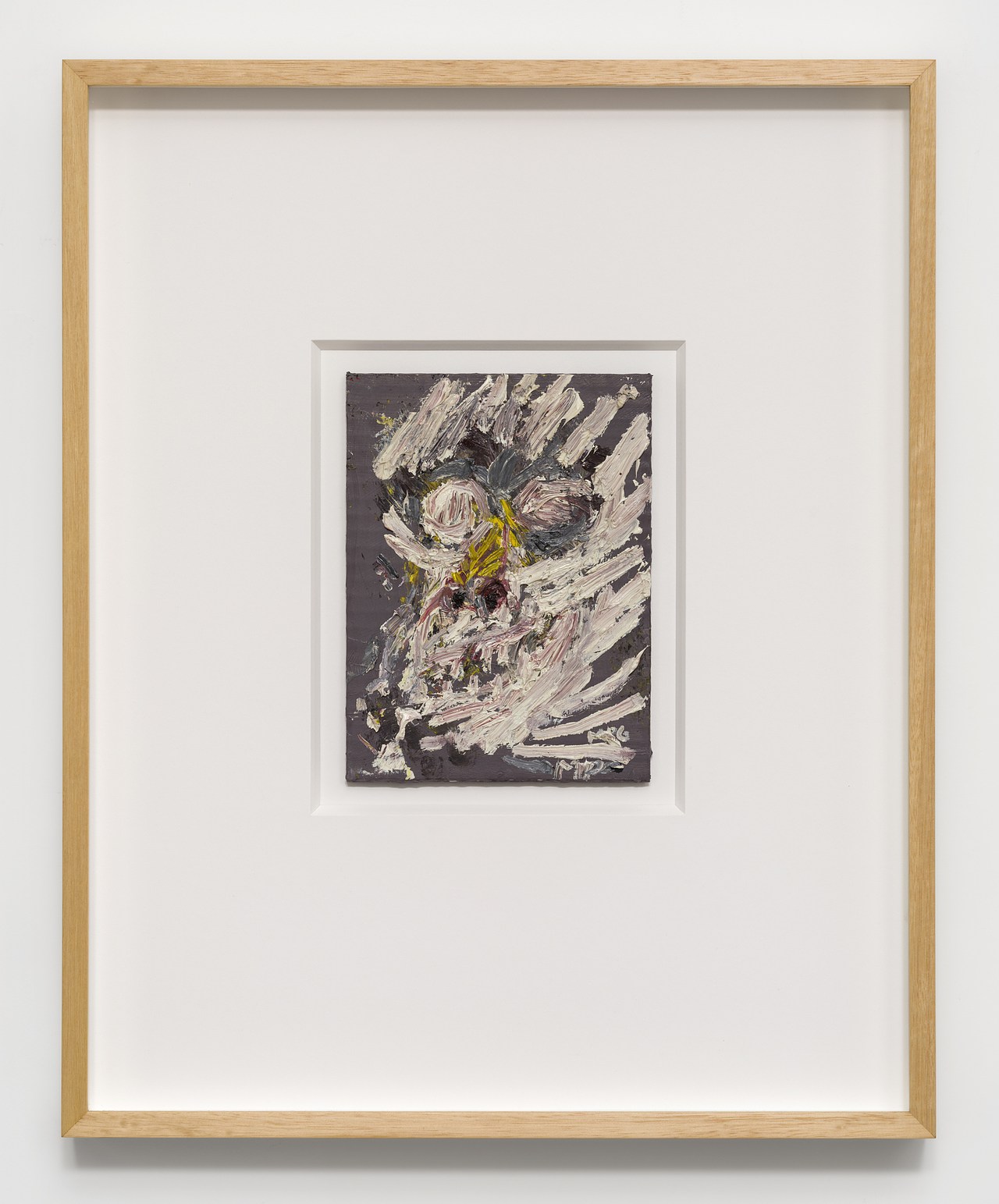Human Quarry
- Painting (Painting)
55 x 42 inches
Leslie Shows
Human Quarry is a large work on paper by Leslie Shows made of a combination of acrylic paint and collage. Both through its title and formally—through how the shapes in the composition resemble a mountain or natural formation—the piece relays us to a mineral quarry or a deep mining pit where materials are extracted. Interspersed among the block-like figures and rocky textures, we also see several human silhouettes, either cut-out, or as if they were whited out by a shining light, or lost in the shadows. There’s additional evidence of human presence: architectural features such as steps and a window, and symmetrical forms that resemble an X-ray scan or an inkblot from a Rorschach test. These references are collisions of opposing forces—positive and negative space, light and dark, presence and absence, consciousness and the subconscious. Together they comprise a complex excavation that somehow equates human experience with geological time, as if the spectral figures were layers of sediment from civilizations past.
Although at first Leslie Shows’ work might read as abstract compositions, a close inspection reveals her expanded approach to painting and the deeper connections she has forged between her practice and the realms of geology, the passing of time and the imaginary. Her works are usually large in scale and materially rich, deftly combining a lush and diverse arsenal including sand, paint, metal, fabrics, plexiglass, ink, and collage among others. Whether hung sideways in diamond-like shapes, or laden with folds, fragments and textures that stretch and drip, her work is rarely confined within the limits of a frame. A key aspect of Shows’ practice is an interest in the various ways in which we relate to the natural world. She has taken inspiration from the mineral pyrite, or iron pyrite, also known as fool’s gold; from water formations from the faces of rocks; and even from calcified mining ruins that the artist remembers from her childhood spent in Juneau, Alaska. Whether suggesting forms from nature like beehives, or emulating the textures of crystals and marble or the shapes of minerals, each piece connects us to a place, a landscape, real or imagined.
Colors:
Related works featuring themes of: » Abstract Painting, » Abstract Versus Figurative Art, » Collage, » Contemporary Color Fields, » American

© » KADIST
Mark Grotjahn
2002This particular drawing, like many of Grotjahn’s works, presents a decentered single-point perspective...

© » KADIST
Wong Wai Yin
2021Drawn from the widely circulated images of protests around the world in support of women rights and racial equality, the phrase I can’t believe we are still protesting is both the title of Wong Wai Yin’s photographic series and a reference to similar messages seen on protest signages...

© » KADIST
Bjorn Copeland
2009Sign #1 , Sign #2 , Sign #3 were included in “Found Object Assembly”, Copeland’s 2009 solo show at Jack Hanley Gallery, San Francisco...

© » KADIST
Matt Lipps
2011In the series Horizons (2010), Lipps uses appropriation to riff on Modernism’s fascination with abstract form...

© » KADIST
Wong Wai Yin
2021Drawn from the widely circulated images of protests around the world in support of women rights and racial equality, the phrase I can’t believe we are still protesting is both the title of Wong Wai Yin’s photographic series and a reference to similar messages seen on protest signages...

© » KADIST
Jeffry Mitchell
2012Though the title might suggest an Adonis, Jeffry Mitchell’s The Swimmer (2012) is a squat, jolly man with a protuberant belly...

© » KADIST
Stephen G. Rhodes
2010For his series of digital collages Excerpt (Sealed)… Rhodes appropriated multiple images from mass media and then sprayed an X on top of their glass and frame...

© » KADIST
John Houck
2013Houck’s Peg and John was made as part of a series of photographic works that capture objects from the artist’s childhood...

© » KADIST
Tony Oursler
2012Continuing Oursler’s broader exploration of the moving image, Absentia is one of three micro-scale installations that incorporate small objects and tiny video projections within a miniature active proscenium...

© » KADIST
Judy Chicago
1969Domes #1 represents a significant moment in Chicago’s career when her art began to change from a New York-influenced Abstract Expressionist style to one that reflected the pop-inflected art being made in Los Angeles...

© » KADIST
Raymond Pettibon
2005The five works included in the Kadist Collection are representative of Pettibon’s complex drawings which are much more narrative than comics or cartoon...

© » KADIST
Wong Wai Yin
2008In this work the artist stages a humorously violent “intervention” against male-dominated cultures of art production in present-day China...

© » KADIST
Milena Bonilla
2009Milena Bonilla’s discursive practice explores connections among economics, territory, and politics through everyday interventions...

© » KADIST
Haegue Yang
2016A steel clothing rack adorned with turbine vents, Moroccan vintage jewelry, pinecones and knitting yarn, these heterogeneous elements are used here to create an exotic yet undefined identity within the work...

© » KADIST
Kota Ezawa
2017The Crime of Art is an animation by Kota Ezawa that appropriates scenes from various popular Hollywood films featuring the theft of artworks: a Monet painting in The Thomas Crown Affair (1999), a Rembrandt in Entrapment (1999), a Cellini in How to Steal a Million (1966), and an emerald encrusted dagger in Topkapi (1964)...

© » ARTLYST
Kara Walker
Brent Sikkema, the Manhattan art dealer renowned for representing artists such as Jeffrey Gibson and Kara Walker found dead The post Brent Sikkema – Visionary Art Dealer Of Jeffrey Gibson And Kara Walker Murdered appeared first on Artlyst ....

© » KADIST
Geoffrey Farmer
2009Ongoing Time Stabbed with a Dagger was Farmer’s first kinetic sculpture that added a cinematic character to an “ever-reconfiguring play presented in real time.” The assembly of various objects and props on top of a large platform constitutes not only a work, but, to a certain extent, a show in itself...



